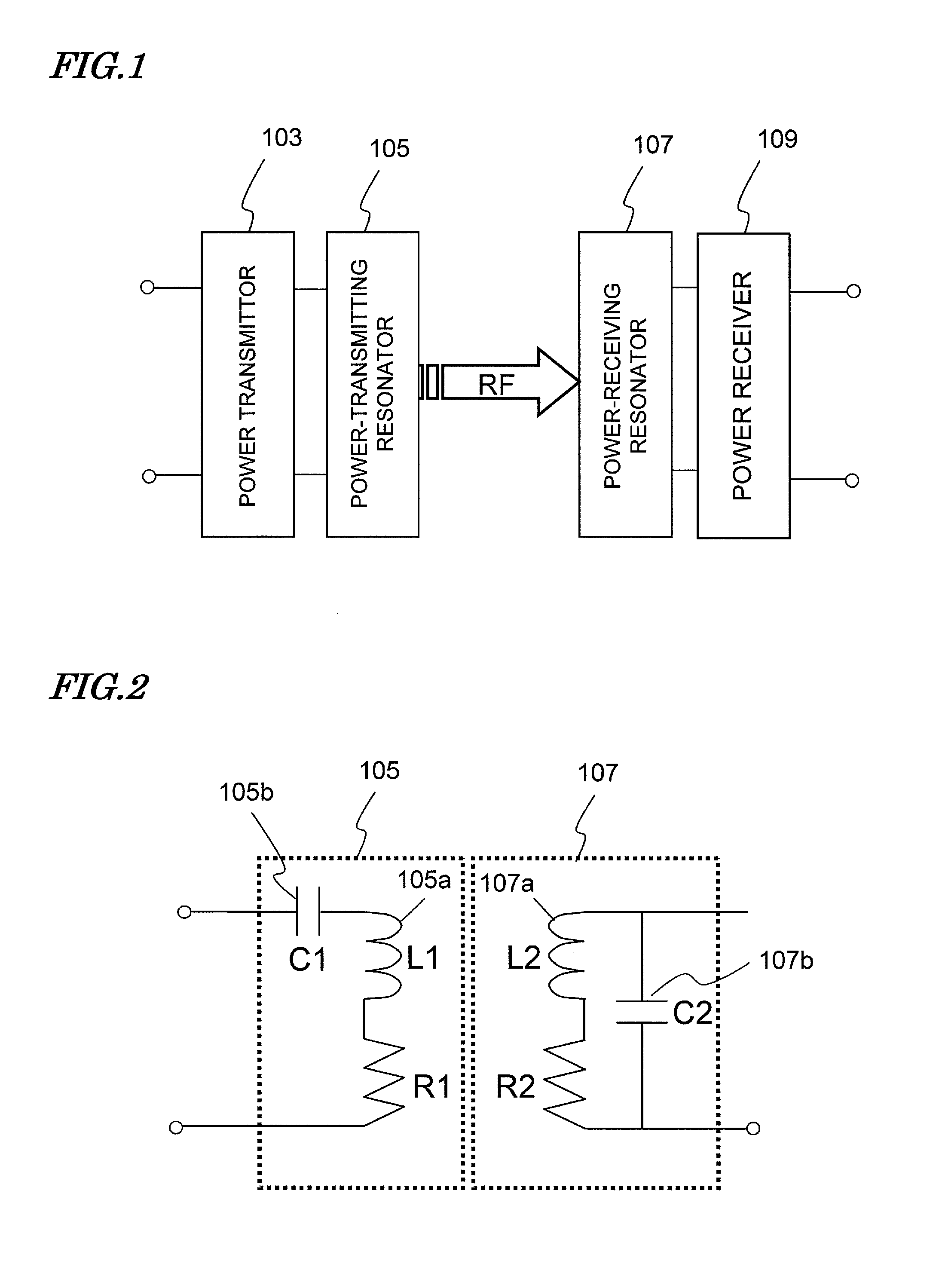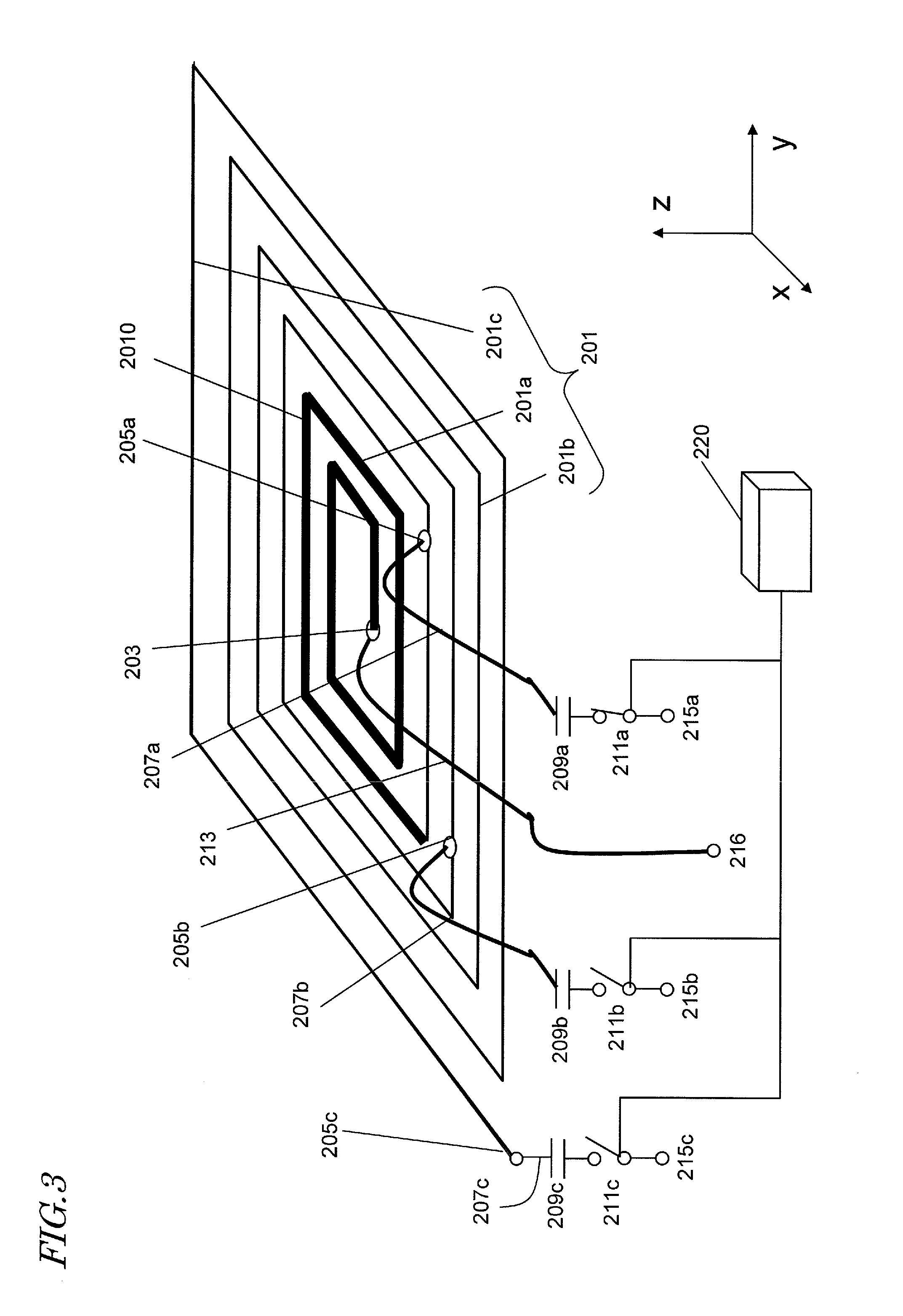Wireless power transmission system
- Summary
- Abstract
- Description
- Claims
- Application Information
AI Technical Summary
Benefits of technology
Problems solved by technology
Method used
Image
Examples
embodiment 1
[0045]FIG. 1 is a block diagram illustrating a configuration for a wireless power transmission system as a first specific preferred embodiment of the present invention.
[0046]As shown in FIG. 1, the Wireless Power Transmission system of this preferred embodiment includes a power-transmitting resonator 105 and a power-receiving resonator 107 and transmits power between the power-transmitting resonator 105 and the power-receiving resonator 107 over a resonant magnetic field. This wireless power transmission system is designed so that the power-transmitting resonator 105 and the power-receiving resonator 107 set up resonances at a frequency f0.
[0047]A power transmitter 103 is connected to the power-transmitting resonator 105. The power transmitter 103 receives DC or AC energy (electric energy) from a power supply (not shown) and transforms the energy into RF energy with the frequency f0. The RF energy is sent out from the power transmitter 103 to the power-transmitting resonator 105. Th...
embodiment 2
[0092]Hereinafter, a second preferred embodiment of a wireless power transmission system according to the present invention will be described with reference to FIG. 8. The only difference between this second preferred embodiment and the first preferred embodiment described above is the arrangement of the impedance variable series resonant circuit. That is why the following description of this second preferred embodiment will be focused on the arrangement of the series resonant circuit and description of the other arrangements will be omitted herein to avoid redundancies.
[0093]In the preferred embodiment illustrated in FIG. 3, the signal-side extended wire 213 to be directly connected to the external terminal 216 is connected to a terminal inside the spiral of the spiral wiring 201. On the other hand, according to this second preferred embodiment, the signal-side extended wire 213 is connected to a terminal that is located outside of the spiral of the spiral wiring 201 as shown in FI...
embodiment 3
[0096]Hereinafter, a third preferred embodiment of a wireless power transmission system according to the present invention will be described with reference to FIG. 9. The only difference between this third preferred embodiment and the preferred embodiments described above is the arrangement of the impedance variable series resonant circuit. That is why the following description of this third preferred embodiment will be focused on the arrangement of the series resonant circuit and description of the other arrangements will be omitted herein to avoid redundancies.
[0097]In the variable resonators shown in FIGS. 3 and 8, switching circuits that make any one of the current paths selectable are provided for only the ground-side extended wires. On the other hand, according to this third preferred embodiment, another switching circuit is also provided for the signal-side extended wire as shown in FIG. 9. Specifically, two signal input terminals 216a and 216b are selectively connected to tw...
PUM
 Login to View More
Login to View More Abstract
Description
Claims
Application Information
 Login to View More
Login to View More - R&D
- Intellectual Property
- Life Sciences
- Materials
- Tech Scout
- Unparalleled Data Quality
- Higher Quality Content
- 60% Fewer Hallucinations
Browse by: Latest US Patents, China's latest patents, Technical Efficacy Thesaurus, Application Domain, Technology Topic, Popular Technical Reports.
© 2025 PatSnap. All rights reserved.Legal|Privacy policy|Modern Slavery Act Transparency Statement|Sitemap|About US| Contact US: help@patsnap.com



